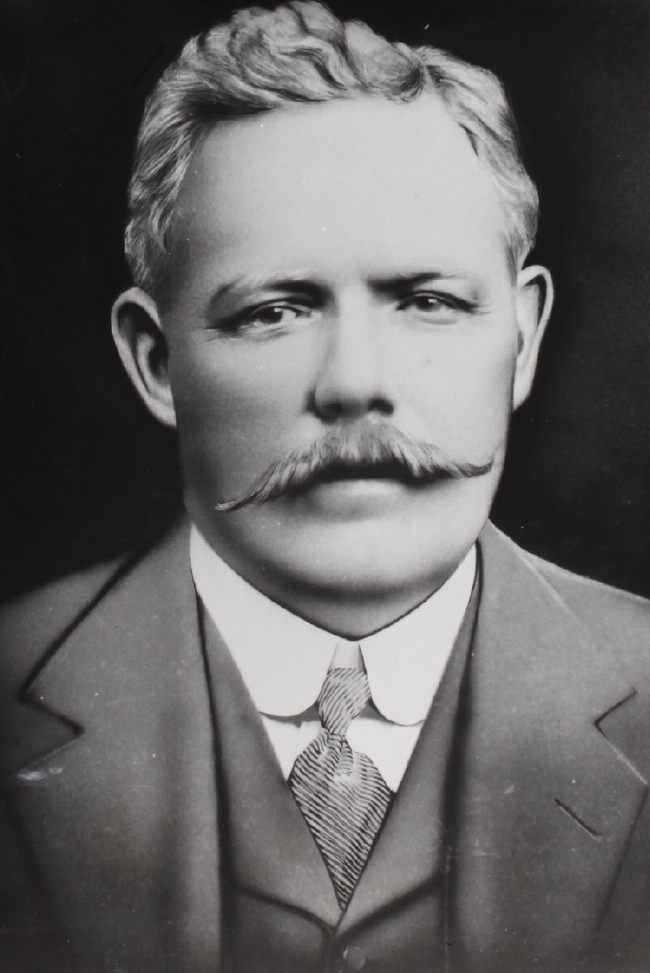By Anna Donne – Sunshine and District Historical Society
One of the questions often asked on social media sites, other than ‘Does anyone know why there’s a police helicopter over our streets?’ is ‘How did Sunshine get its name?’
In 1884, a young industrious Hugh Victor McKay living on his family’s property in Drummartin, developed a new type of stripper harvester that was able to produce cleaned grain in a single process. By the late 1880s, the McKay Harvesting Machinery Company had set up a factory in Ballarat and was exporting harvesters across Australia and to places like Siberia, where the agricultural conditions were similar.
By 1895, following an economic recession and forced liquidation, McKay had improved the design of the harvester and rebranded the company as the Sunshine Harvester Company. McKay had reportedly heard a sermon on ‘The power and benefits of sunshine’, prompting his new company name and, as history shows, the naming of a whole new suburb.
In 1904, to offset transport and freight costs, McKay moved his factory to Braybrook Junction, located near the main railway lines to Ballarat and Bendigo. McKay’s plan was to build the largest industrial enterprise in the southern hemisphere, including a community of what he referred to as ‘contented workers’ living in houses he had built, earning ‘good wages and living in reasonable comfort’.


His business was highly successful and by 1910 Sunshine Harvester Works employed more than 1,300 workers and the region of Braybrook Junction was renamed Sunshine, to reflect the role McKay’s company had played in developing the area. Braybrook Shire would subsequently become the suburb we know today as Sunshine.
To support his workers, McKay bought 300 acres of land and parcelled it out, assisting large numbers of employees to build their homes near his factory. McKay also undertook the work of road making, the reticulation of water and the connection of electric light to these homes. The sub-division provided for allotments with fifty feet frontages; there would be no slums for McKay’s workers. Many of these homes exist today and are noted for their historical significance; a testament to the quality of builds.
In line with his plan for ‘contented workers living in reasonable comfort’, McKay developed Sunshine Gardens alongside his factory, to provide amenities for his employees. In later years, these gardens were renamed the HV McKay Memorial Gardens and in the 1990s were listed by the National Trust of Australia. Museums Victoria notes that in 1913, McKay donated land to build Sunshine Technical School, with half of the students working as apprentices at Sunshine Harvester Works.
McKay took a generous but perhaps paternalistic approach to his workers; however, he was not always supportive of workers’ rights, actively discouraging unions and preferring to maintain the principles of the ‘open shop’. In 1908 McKay argued against a significant increase in workers’ wages, resulting in the historically significant ‘Harvester Judgment’.
The ‘Harvester Judgment’ came about after the Federal Government’s ‘New Protection policy was’ proclaimed as part of the Excise Tariff Bill in 1906. Under the New Protection policy, companies were required to apply for a certificate confirming the conditions of manufacture, and that wages in the company were ‘fair and reasonable’.
The Arbitration Court adopted a standard based on ‘the normal needs of the average employee’ and certified that wages of two pounds and two shillings per week were fair and reasonable, well above the average wage of the time. Companies that did not meet this ‘fair and reasonable’ threshold were required to pay a tax on the products they sold.
McKay applied for an exemption from this requirement, which was not granted. He appealed to the High Court and succeeded; however, the Arbitration Court’s standard of a fair and reasonable wage remained and became the basis for the minimum wage system that exists today.
McKay died in 1926, with his will containing instructions that a trust be established to improve country life and aid charity in Sunshine. The HV McKay Charitable Trust continues to operate today.
In the most recent census, Sunshine’s population was 9,445. It is considered one of Melbourne’s principal places of employment outside of the CBD and is one of the most culturally diverse suburbs of Melbourne. Something that the farm boy from Ballarat could only have imagined when he first heard the sermon on the ‘The power and benefits of sunshine’.

